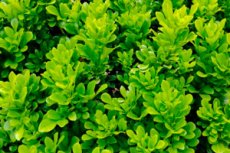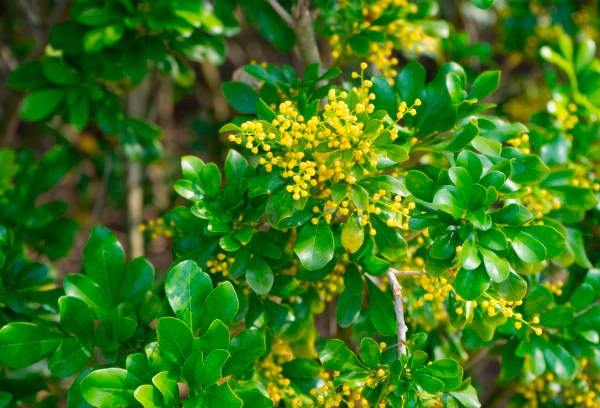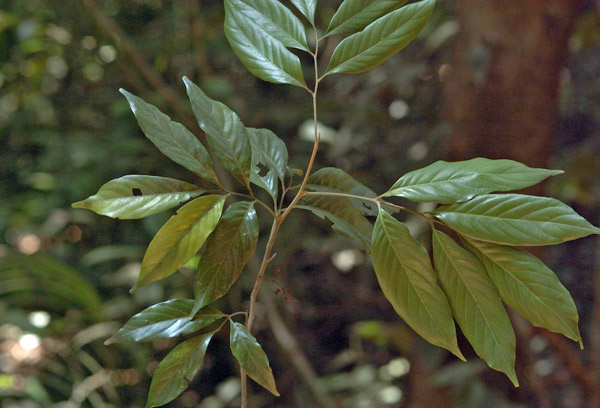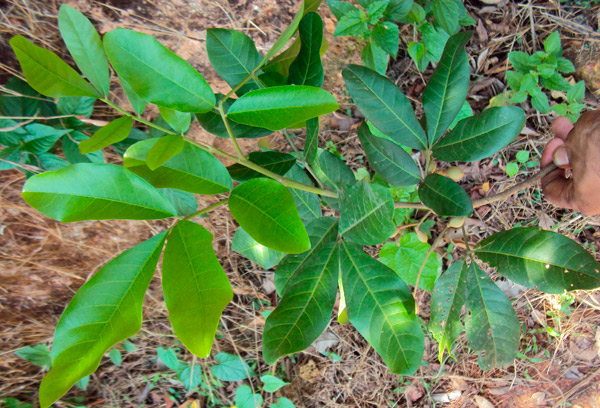New publications
Plants
Aglaia
Last reviewed: 29.06.2025

Aglaia (Latin: Aglaia) is a genus of woody plants known for their fragrant flowers and decorative leaves. The most well-known species is Aglaia odorata, which is valued in cultivation for the pleasant fragrance of its blooming buds and its ease of care in indoor environments. In the wild, species of the genus can reach considerable sizes, while as a houseplant, Aglaia typically remains relatively compact, making it suitable for growing indoors or in small greenhouses.
Etymology of the name
The name "Aglaia" derives from the ancient Greek word meaning "brightness" or "radiance." In Greek mythology, Aglaia was one of the Charites (also known as the Graces), the goddesses of beauty, charm, and elegance. The genus name emphasizes the attractiveness of the plant as well as its cultural and aesthetic value in horticulture and indoor gardening.
Life Form
Aglaia is a woody plant that in its natural habitat can take the form of a small tree or large shrub. The trunk and branches are often covered with thin bark, and the leaves are arranged alternately, forming a dense but relatively compact crown.
In indoor cultivation, Aglaia assumes the shape of a decorative shrub: the growth of its stems is restricted by the limited pot size, and the crown can be artificially shaped through pruning. The absence of extreme weather conditions and the provision of a constant temperature allows Aglaia to maintain its ornamental value throughout the year.
Family
Aglaia belongs to the Meliaceae family, whose members are widely distributed in tropical and subtropical regions around the world. This family includes many ornamental, medicinal, and economically important plants, such as neem ( Azadirachta indica) and mahogany ( Swietenia mahagoni).
Meliaceae plants are characterized by complex or pinnate leaves, often with a rough texture. Most species have small flowers, which are often strongly aromatic or contain bioactive compounds. Aglaia species are known for their fragrant flowers, and the wood of some species is used by local people for craft purposes.
Botanical characteristics
The leaves of Aglaia are typically compound, pinnate, or rarely simple, glossy, dark green, and arranged on short petioles. The flowers are small, pale yellow or creamy, gathered in panicle or racemose inflorescences, and are often very fragrant. The fruits, depending on the species, can be small berries or drupes with one or several seeds.
The root system is well-developed, with a taproot in larger specimens, which ensures stability in the wild. In cultivation, the roots remain more compact, adapting to the pot size.

Aglaia odorata
Chemical composition
Aglaia, especially its flowers, contains essential oils with a pronounced fragrance. The chemical composition of these oils includes various terpenoids, linalool, and other aromatic compounds, giving the flowers their characteristic sweet scent.
In addition to essential oils, flavonoids, coumarins, triterpenoids, and other biologically active compounds typical for Meliaceae plants may be present in the leaves and wood. Some of these compounds may have anti-inflammatory or insecticidal properties, but their concentration is generally low.
Origin
The genus Aglaia is primarily found in the tropical and subtropical regions of Southeast Asia, including China, India, Indonesia, Malaysia, Vietnam, and the Philippines. In the wild, Aglaia grows in humid tropical forests, where temperatures rarely drop below 15 °C, and humidity remains high throughout the year.
In horticulture, Aglaia odorata, also known as the "Chinese fragrant tree" or "Chinese jasmine tree" due to the strong fragrance of its flowers, has become the most widely grown species. Over time, it became popular in Europe and the USA, where it is cultivated as a houseplant and in greenhouses.
Ease of growing
Aglaia is not considered particularly difficult to cultivate, but it does require specific conditions. These include a stable temperature regime, sufficient humidity, and a bright location without direct harsh sunlight. Regular fertilization and protection from sharp temperature fluctuations are also necessary for abundant flowering.
The main challenges involve the plant's susceptibility to cold and overwatering. Beginners in horticulture should carefully monitor watering and substrate moisture. When basic care recommendations are followed, Aglaia can thrive and bloom indoors.
Species and varieties
The genus Aglaia includes more than a hundred species, but only a few have been widely cultivated. The most well-known are:
- Aglaia odorata (Fragrant Aglaia): the most popular species in indoor gardening.
- Aglaia elaeagnoidea: larger, with silver-toned leaves.
- Aglaia lawii: characterized by slightly elongated leaves and slightly larger flowers.
Hybrid forms of Aglaia bred by horticulturists are rare, as the plant retains sufficient decorative value in its original species.

Aglaia lawii
Size
In its natural habitat, Aglaia can reach heights of 2–5 meters and develop a spreading or pyramidal crown. In container cultivation, the height is usually limited to 60–100 cm, which is particularly convenient for growing indoors.
The bush can grow up to 50 cm or more in width over time, provided the plant has enough space and is cared for properly. Crown shaping through pruning helps maintain a compact size.
Growth rate
Aglaia grows moderately fast: under favorable conditions, it can grow 10–20 cm in height per season. Growth rates depend on lighting, watering regularity, substrate quality, as well as the overall length of the daylight hours and temperature.
Under low light conditions or with temperature fluctuations, growth slows down. Regular fertilization and high humidity help stimulate more intense vegetative growth and bud formation.
Lifespan
Aglaia is a perennial woody plant with potential for a relatively long life. In the wild, individual specimens can live for decades. In indoor cultivation, with proper care and periodic repotting, the plant can maintain its decorative appearance and ability to flower for more than 5–10 years.
As the plant ages, if it does not experience severe stress, Aglaia will continue to form new shoots and flowers. However, a lack of space for roots or prolonged lack of rejuvenating pruning may lead to a decline in appearance and reduced flowering intensity.
Temperature
The optimal temperature range for Aglaia is 18–25 °C. Sharp temperature fluctuations, as well as temperatures below 12–15 °C, can cause leaf drop and cessation of flowering.
In summer, when temperatures exceed 28–30 °C, the plant should be sprayed more often and the room should be ventilated to avoid overheating. In winter, slightly lower but stable temperatures (around 16–18 °C) are preferred, but the root system should not be allowed to get too cold.
Humidity
Aglaia prefers moderate to high humidity (around 50–70%). In excessively dry conditions, leaves may lose turgor, yellow, and buds may drop. Regular leaf spraying, the use of humidifiers, or placing the plant on a tray with wet gravel helps maintain a comfortable humidity level.
It is also important to ensure good air circulation, as stagnant moisture in high humidity can lead to fungal diseases. The optimal solution is a combination of humidity control and periodic ventilation.
Lighting and room placement
Aglaia needs bright but diffused light. Direct midday sunlight, especially in hot climates, can scorch the leaves, so it is recommended to place the pot near east or west-facing windows or use a light curtain to protect it from the sun.
Insufficient lighting leads to leggy growth and weakened flowering. If necessary, grow lights or daylight lamps can be used, especially in winter when natural light is reduced.
Soil and substrate
Aglaia requires a mixture of 40% general-purpose potting soil, 20% peat, 20% coarse sand or perlite, and 20% leaf mold (or compost). This structure ensures drainage and holds enough moisture. The soil’s acidity should be in the range of pH 5.5–6.5.
A drainage layer of expanded clay or fine gravel at the bottom of the pot is essential to prevent water stagnation. Heavy or clayey soil is unsuitable, as roots can rot with the slightest overwatering.
Watering (summer and winter)
In summer, Aglaia should be watered regularly but allowed the top layer of substrate to dry slightly before the next watering. On hot days, more frequent watering may be necessary, but "swampy" conditions in the pot should be avoided. Excess water should be drained from the saucer.
In winter, watering intensity is reduced. If the plant is kept in a cooler room (16–18 °C), the substrate should be watered once every 7–10 days, depending on its drying. Overwatering in winter leads to root rot and plant death.
Fertilizing and feeding
During the active growing period (spring to early autumn), Aglaia should be fertilized every 2–3 weeks with a balanced mineral fertilizer (NPK). Specialized fertilizers for flowering plants, enriched with micronutrients, can also be used.
Fertilization methods include root feeding (watering with the fertilizer solution) and foliar feeding (spraying leaves with a weaker solution). It is important not to exceed the recommended doses, as this can cause root burns or excessive leaf growth at the expense of flowering.
Flowering
Aglaia flowers are small but very fragrant, arranged in small racemose clusters. The flowering period can last from a few weeks to a month, depending on the growing conditions. The flowers have a sweet, pleasant fragrance, which is why the plant is often called the "Chinese fragrant tree."
Regular bud appearance requires maintaining moderate humidity, sufficient light, and periodic temperature lowering during winter. If all conditions are met, Aglaia can bloom several times a year, delighting owners with its intense fragrance.

Aglaia elaeagnoidea
Propagation
Aglaia is propagated in spring or early summer by taking cuttings from semi-woody shoots about 8–10 cm long. The cuttings are rooted in a moist substrate with peat and perlite at a temperature of 20–25 °C, often using rooting stimulants. Roots form within 3–4 weeks.
Growing from seeds is possible if available but is less common. Seeds should be sown in a mixture of peat and sand, maintaining high humidity and temperatures around 22–25 °C. Germination occurs within 2–4 weeks, but it may take several years before flowering.
Seasonal features
From spring to autumn, Aglaia actively increases its green mass and can form buds. During this period, regular fertilization and adequate watering are essential. Summer is the optimal period for flowering and new shoot growth.
In autumn and winter, as the daylight hours shorten, growth slows down. Aglaia can be kept at slightly lower temperatures (16–18 °C) and with reduced watering, allowing the plant to "rest" and set buds for the next season.
Care features
The key to success in growing Aglaia is maintaining stable conditions: avoiding sharp temperature fluctuations, regularly checking substrate moisture, and ensuring adequate lighting. The plant is sensitive to stress, but with proper care, it recovers quickly.
If wilting or yellowing of leaves occurs, it is necessary to check watering quality, lighting levels, and the presence of pests. Timely adjustments to the care routine usually help restore Aglaia’s healthy appearance.
Home care
The first important aspect is placement: Aglaia prefers a well-lit spot but without direct sunlight during midday. An east or west-facing windowsill with the option to shade during hot hours is optimal.
The second key point is systematic watering. The soil should remain evenly moist but not wet. In summer, it’s best to check the substrate every 2–3 days; in winter, once a week or slightly less.
The third aspect is regular fertilization during the active growth period. Use balanced fertilizers, applying them every 2–3 weeks, alternating between root and foliar feeding.
Finally, Aglaia appreciates high humidity. Regular spraying with warm water, placing the pot on a tray with expanded clay, or using humidifiers will help avoid dry air and leaf problems.
Repotting
The choice of pot depends on the root system size. If the roots have filled the previous volume and are sticking out of the drainage holes, the plant should be repotted in a container that is 2–3 cm larger in diameter.
The material of the pot is not crucial (plastic or ceramic), but sufficient depth and drainage holes are important. Repotting should be done carefully, avoiding root damage. After the procedure, Aglaia should be given a few days to adapt with moderate watering.
Pruning and crown shaping
To maintain a compact shape and stimulate side branching, formative pruning can be done. The optimal time is early spring, before active growth begins. Branches should be shortened by one-third or one-half of their length using a sharp, sterile tool.
Also, remove dry or damaged shoots to improve air circulation and reduce the risk of fungal diseases. Pruning helps rejuvenate the plant and gives it a neater appearance.
Possible problems and solutions
Diseases are typically caused by improper watering (root rot) or chilling. Symptoms include wilting leaves and dark spots on the roots. The solution is to reduce watering, ensure drainage, and treat with fungicides if necessary.
Nutrient deficiencies manifest as pale leaves, slowed growth, and poor flowering. Regular fertilization with specialized fertilizers and adjusting the substrate composition can fix the issue. Care mistakes such as sharp temperature fluctuations or poor lighting can cause bud drop.
Pests
The main pests attacking Aglaia include spider mites, thrips, and scale insects, which prefer dry air or excessive heat. Early signs include spot damage on leaves, sticky residue, or webs.
Prevention includes maintaining high humidity and regularly inspecting the plant. If pests are found, apply insecticides (for mites and scale insects) according to the instructions. A gentler option is using biopreparations or a soap solution for leaf treatment.
Air purification
Aglaia, like many evergreen plants, helps enrich the air with oxygen and absorbs some volatile organic compounds. Additionally, its large leaves trap dust, aiding in partial air purification.
Regularly wiping the leaves with a damp sponge enhances the plant’s photosynthesis capacity and improves its "filtering" efficiency. While Aglaia doesn’t play a significant sanitary role, it contributes to creating a healthier atmosphere.
Safety
Currently, Aglaia is not considered toxic to humans or pets during normal indoor contact. However, consuming parts of the plant may cause digestive upset.
Allergic reactions are extremely rare. People prone to allergies from pollen or essential oils are advised to exercise caution when pruning flowers or inhaling the fragrance intensely.
Wintering
In winter, Aglaia requires a period of relative dormancy with lower temperatures (around 16–18 °C) and reduced watering. This helps the plant recover and prepare for spring growth. If the room temperature is above 20–22 °C, Aglaia may continue slow growth, but flowering in the next season may be less abundant.
At room temperatures above 24–25 °C and low humidity in winter, the plant may shed leaves and buds. It is recommended to place the pot away from heating radiators and spray the leaves more frequently.
Beneficial properties
Aglaia not only decorates interiors but also has a positive emotional impact. Its delicate fragrance promotes relaxation and enhances mood. Some enthusiasts note that during flowering, the atmosphere in the house becomes cozier.
Like many Meliaceae species, Aglaia may contain compounds with potential antimicrobial or insecticidal effects, but its cultivation is more commonly associated with aesthetic benefits rather than practical use.
Use in traditional medicine or folk remedies
In some regions of Asia, Aglaia leaves and flowers are used in traditional medicine for aromatherapy and improving mood. Infusions of flowers are used locally as a mild remedy for headaches or to alleviate cold symptoms.
Scientific research on this topic is limited, so the use of Aglaia for medicinal purposes remains part of local traditions. If intending to use the plant for folk medicine, it is advisable to consult a specialist.
Use in landscape design
In warm climates, Aglaia is planted in gardens or terraces, where it quickly grows into a small decorative tree or bush. Its fragrant flowers create a pleasant atmosphere in outdoor spaces.
Vertical gardens and hanging compositions with Aglaia are less common because the plant has a woody structure and requires a significant amount of substrate. However, in large pots, it can create a beautiful accent if proper support is provided.
Compatibility with other plants
Aglaia pairs well with other ornamental leafy plants such as Schefflera or Dracaena, as their humidity and temperature requirements are similar. It can also be placed near other sun-loving flowering plants like hibiscus or ficuses.
However, it should be avoided with plants that prefer alkaline soil and low humidity. Aglaia, requiring more acidic and moisture-retentive soil, may not be compatible with such plants in one composition.
Conclusion
Aglaia is an elegant and fragrant houseplant that, with proper care, can reward gardeners with long-lasting flowering and steady growth. Its charm lies in the fragrant buds that resemble miniature flowers, as well as its lush, bright green foliage.
By adhering to specific conditions such as moderate watering, adequate lighting, and maintaining increased humidity, Aglaia can reveal its full ornamental potential. For lovers of exotic plants, Aglaia will be a true interior decoration, bringing an atmosphere of coziness and natural freshness.
